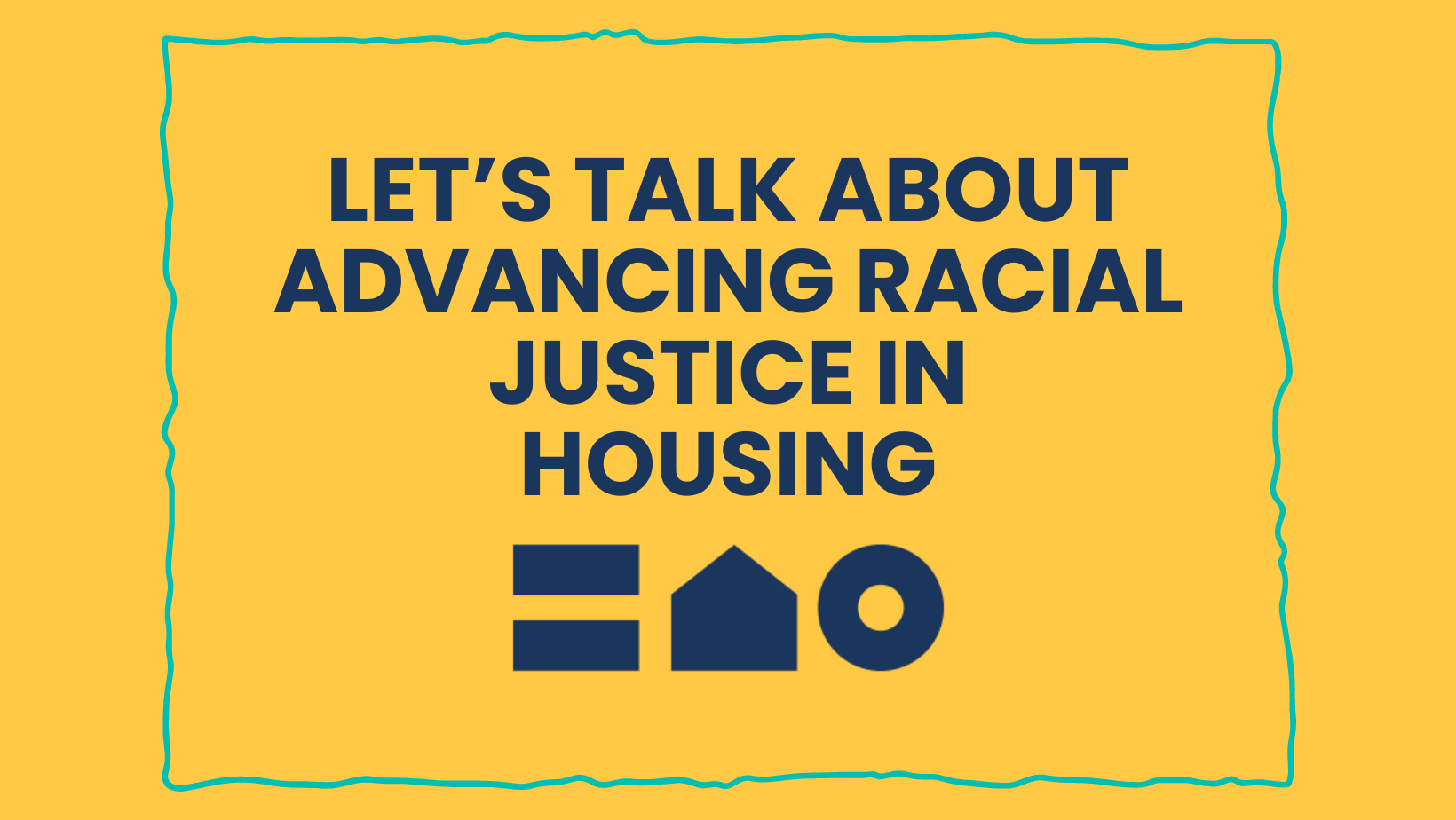Racial inequities have long been baked into housing through public policies like redlining, segregation, predatory lending, and exclusions in the New Deal and the G.I. Bill. The results of these discriminatory practices are far reaching and continue to drive the current housing crisis and racial wealth gap. In 2022 white families’ median wealth was more than 6 times that of Black families ($285,000 compared to $44,900). The National League of Cities highlights five of the ways these racist policies continue to impact Black Americans today:
- On average, homes in Black neighborhoods are undervalued by nearly $50,000 leading to $156 billion in cumulative losses each year.
- Households of color (Black households: 4x, American Indian or Alaskan Native households: 3x, Hispanic households: 2.5x) are far more likely than their white counterparts to have incomes at or below the poverty level or the area median income.
- Low-income women of color are severely cost burdened and face the highest eviction rates.
- Black Americans make up 13% of the general population but more than 40% of the homeless population.
- In 2020, Black unemployment rates were nearly 44% higher than white unemployment rates.
Being cognizant about these disparities is not enough, they require affirmative steps to address and repair them. Here are some housing policy solutions that we can all support to address the historical discrimination faced by people of color, particularly Black Americans.
- Promote greater access to homeownership for the Black community.
- Improve access to down payment assistance: unfair policies that have systematically excluded Black families from accessing homeownership, education, and job opportunities have contributed to the racial wealth gap , limiting the ability of Black parents to pass on financial resources to their children. Down payment assistance programs, such as matched savings programs and advanceable tax credits for low-income first-time homebuyers, can be instrumental in overcoming this common obstacle.
- Expanded access to affordable credit: considering the historical context of redlining and discriminatory lending practices in the U.S., it is crucial to expand access to mortgage and business credit for underserved, low-income, and minority homebuyers and communities. There are numerous tools available to address racial inequities in lending, but they require further enhancement.
- Increase accessible homeownership opportunities: even with the availability of down payment assistance, the high cost of homes continues to be a significant barrier to achieving homeownership. Supporting government grants that fund affordable home construction can assist organizations that do the work with creating long-term, sustainable homeownership opportunities.
- Allocate resources to underprivileged, marginalized communities.
Numerous neighborhoods that were once subjected to discriminatory practices still face the consequences of disinvestment and economic distress. Reinvestment and tax incentives aimed at these communities would be instrumental in igniting recovery and fostering opportunities. However, it is crucial to carefully design these investments to avoid displacing current residents and businesses.
One potential solution involves implementing tax credits aimed at revitalizing dilapidated homes in areas with depressed property values. This initiative seeks to enhance the accessibility of affordable homeownership for residents. An example of such legislation is the Neighborhood Homes Investment Act. Ensuring existing residents can stay and benefit from neighborhood improvements involves providing property tax relief for low-income homeowners and making investments in home repairs.
- Put an end to the continuation of segregation.
Segregation is the result of intentional policy and zoning decisions that resulted in the neglect and isolation of communities where Black households resided, while simultaneously creating exclusive communities that offered better opportunities but excluded people of color. Today’s zoning practices continue to contribute to the ongoing segregation in our society. It is imperative for governments at all levels to prioritize the expansion of opportunities for Black households to reside in neighborhoods that offer excellent schools and secure streets. They can accomplish this by:
- Adopting zoning regulations to promote the creation of mixed-income communities: By promoting a more inclusive approach to housing, localities can create communities that are open and welcoming to people from all backgrounds. Policies that promote zoning modifications such as reducing minimum home- and lot-size requirements, allowing duplexes and triplexes, expanding apartment locations, and streamlining review processes can contribute to this goal.
- Constructing and preserving affordable homes in thriving communities: Zoning reforms are often not enough on their own. Governments must also prioritize increased investments in affordable housing within inclusive communities. Local and state governments can play a crucial role in promoting mixed income housing developments and providing affordable homes in well-resourced neighborhoods. They can achieve this by offering incentives and making public land accessible at low cost.
- Increasing mobility options for families with vouchers: Federal housing choice vouchers were designed to help low-income households afford modest rental homes in every U.S. neighborhood. However, the resistance from landlords, exorbitant deposit requirements, and unaffordable moving expenses frequently hinder families from accessing these opportunities beyond areas with high poverty and segregation. Implementing voucher mobility programs that incorporate landlord outreach and mediation, tenant counseling, and moving-cost assistance can significantly enhance the ability of families with vouchers to access high-opportunity neighborhoods. Scaling these programs would bridge more low-income families to communities of opportunity.
- Support the development of affordable rental housing.
There is a significant disparity between the number of housing choice vouchers available and the number of eligible households in need. This poses a challenge in terms of increasing affordability for very low-income renters. Expanding voucher availability can swiftly alleviate housing cost burdens for hundreds of thousands of Black renters. This is why public investment in rental affordability is essential to tackle the unfair cost burdens and housing instability faced by Black households.
These disparities don’t have to be a permanent fixture of life in America. Together, we can address and repair the damage done by discriminatory policies and systemic practices that have held Black Americans and people of color back for far too long.


